The Lambertson Patented Safety Burner was manufactured by The Phoenix Manufacturing Company located at 22 Mechanic Street, Newark, New Jersey.
The firm was established in 1877. They were the sole manufacturers of the Lambertson burner and made other household specialties as well. They were listed in the Newark City Directories until at least 1916. There is little else written about the company.
The burner is touted as Lambertson's Non-Explosive Safety Lamp Burner, warranted to last ten years. The burner was heavily marketed as a safety device.
The advertisement lists seven merits over other burners:
Judging from the number of surviving examples, it must have been a relatively popular burner, at least in the northeast, where I have seen it many times. While all the advertising hype about the safety features and increased light output may have little practical merit, the addition of the filler tube does. This burner represents one of few examples of an external fill device - it's simple and functional. If I had lived during the period, I believe that I would have been sold on this little novelty.
After I wrote this article, it was brought to my attention by fellow collector, Jeff Smith, that the Lambertson Burner had also been manufactured by The Plume & Atwood Manufacturing Company. I am grateful to
As you can see, the burners are similar in appearance, but there are a number of significant differences. The prongs that hold the chimney on the Phoenix burner are ornately decorative, while the prongs on the P&A burner are quite plain and similar to those on many of the P&A burners of the period. The burner cone, or deflector, is also quite differently shaped as evidence in the images provided here. There are punched-out tabs on each side of the blaze hole that serve as stops and limit the upward travel of the extinguisher when engaged. These are not present on the Phoenix version. The thumb wheel on the Plume and Atwood product is marked: PAT NOV 26. 72 / PAT FEB 11. 73
The November 26, 1872 patent corresponds to US Patent number 133,397, granted to Lewis J. Atwood for the air distributor and chimney clamp springs. The second patent, number 135,749, granted on February 11, 1873, also to Lewis Atwood, for the air distributor and deflector. Both patents were assigned to Plume and Atwood. The weighted extinguisher on the P&A burner is quite plain and manufactured without attention to detail, unlike the Phoenix version which is ornate and detailed. The fill tube and cap, while not identical, are similar both in shape and with respect to the embossed pattern.
I am uncertain as to the actual chronology of the manufacture of these burners. It is interesting that the Plume & Atwood version does not bear Lambertson's patent, which would lead me to believe that the rights were either transferred or sold to P&A after they were made by The Phoenix Manufacturing Company.
To view Lambertson's complete patent, click Query USPTO Database. This will take you to the U.S. Patent & Trademark Office Database. You are then just two mouse clicks away from viewing the actual patent. Learn more about the USPTO here.
|
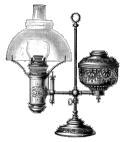
| Reference Desk | Lamp Information | Other Resources | On-Line Shopping |

Purveyors of Antique Lighting and Accessories
435 Main Street
 Hurleyville, New York 12747
Hurleyville, New York 12747
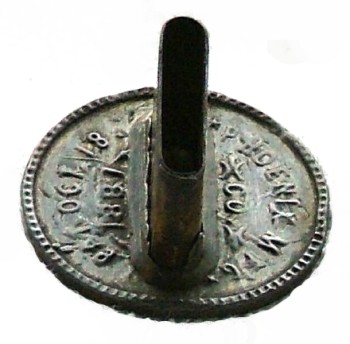 Weighted Extinguisher
Weighted ExtinguisherPhoto: Frank Harchuska
[Click here to enlarge]

Weighted Extinguisher
 Lambertson's burner
Lambertson's burnerwith no Filler Tube
interesting lighting inventions

The Lambertson Lamp Burner
^ Top of Page
Privacy Policy | Terms and Conditions of Use | Announcements
Copyright © 2001-2011 ~ Daniel Edminster | The Lampworks ~ All Rights Reserved
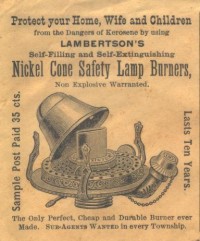
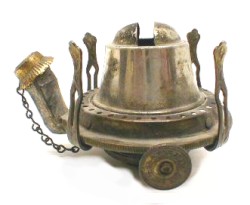

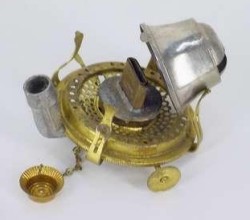
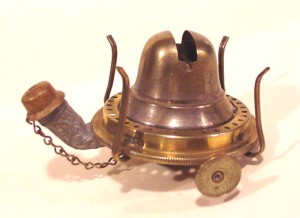
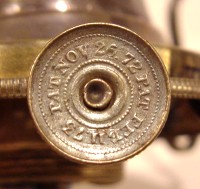
 Spafford W. Lambertson's Patent
Spafford W. Lambertson's Patent